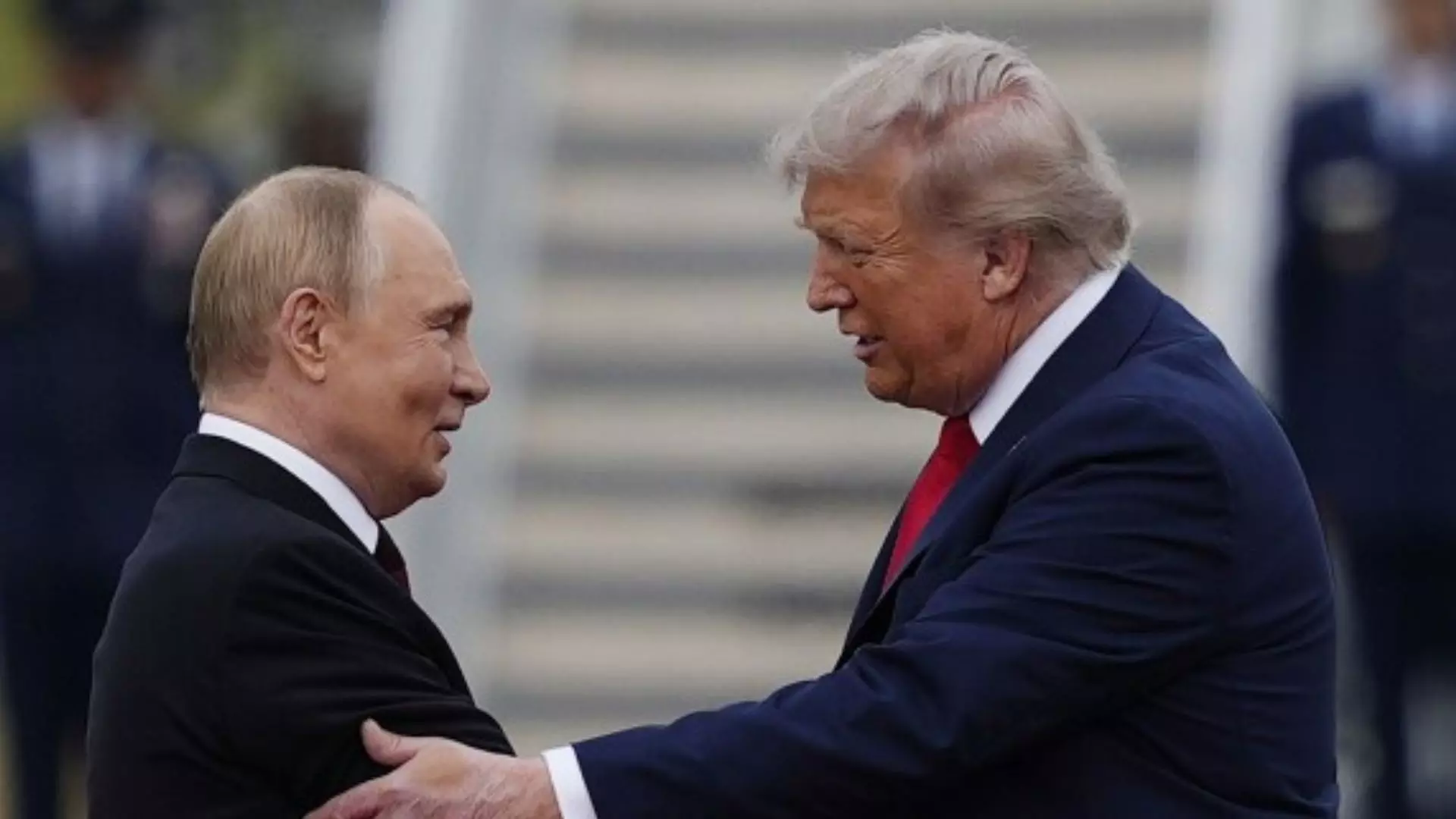
Trump-Putin Alaska meeting: Why it matters | Prof Swaran Singh explains
Inside the Trump–Putin talks in Alaska: Key issues, outcomes, and global impact

The highly anticipated meeting between US President Donald Trump and Russian President Vladimir Putin in Alaska ended with cordial optics but few substantive outcomes. With Ukraine absent and no ceasefire announced, questions remain about the next steps in this protracted conflict. Professor Swaran Singh of Jawaharlal Nehru University explains the signals from the summit and what lies ahead.
What are your key takeaways from the Trump–Putin summit in Alaska?
The summit, which lasted less than three hours instead of the expected six to seven, ended without concrete results. The optics were warm — Trump received Putin with a red-carpet welcome, invited him to ride in his limousine, and showcased positive body language.
For Putin, this was significant, as international criminal court warrants have curtailed his travel in recent years. Attending a summit in the United States broke that isolation.
While the atmosphere was cordial, there was no deal on Ukraine. Trump himself said at the outset, "there is no deal until there is a deal." Nevertheless, both leaders expressed willingness to continue talks. Putin praised Trump’s “sincere efforts” and invited him to Moscow for a follow-up, raising the prospect of a series of summits.
There was hope for at least a ceasefire announcement. Why did that not happen?
Trump described the talks as “exploratory,” suggesting this was the first step towards building a framework. While no ceasefire was declared, the door remains open for future negotiations.
Compared to Trump’s abrupt past summits, this meeting was overall more positive. Yet, large gaps remain between the two sides. Putin reiterated his position that NATO’s expansion and Ukraine’s possible membership are the root causes of the conflict.
Ukrainian President Volodymyr Zelenskyy, though not invited, released a video message saying Kyiv was ready for peace but accused Russia of not being serious. European leaders also stressed that no territorial arrangement should be made without Ukraine’s participation. This increases the likelihood that Trump may push for a trilateral or expanded summit in the future.
Would an expanded summit with Ukraine and European leaders make the process easier or more complicated?
The path forward is unlikely to be simple. Trump appears determined to bring Zelenskyy into expanded talks, but Putin signaled a preference for bilateral negotiations with the United States.
Putin emphasised that neither Ukraine nor Europe should undermine what he described as “understandings” reached with Trump. His preference for bilateral talks likely stems from the expectation that he can secure better terms negotiating one-on-one with the US rather than facing a united Western bloc.
This divergence makes the next stage uncertain — whether talks remain bilateral or expand to include Ukraine and European leaders will shape the outcome.
The issue of territory is central. How do you see that being resolved?
This remains the most complex part of the conflict. Zelenskyy has repeatedly ruled out surrendering any territory, citing Ukraine’s constitution, which vests power to change borders only with the national legislature.
Russia, meanwhile, seeks to retain control of Crimea, annexed in 2014, and large parts of Donbas including Donetsk and Luhansk. Moscow has declared some of these as “independent republics” and shows no intention of relinquishing them.
Trump has hinted at the possibility of “territorial swaps,” though what that would look like in practice is unclear. European allies have not ruled out such swaps but insist Ukraine must be directly involved. Given Russia’s track record of holding onto territories captured in conflicts with neighbors such as Georgia and Moldova, any resolution will be painstaking and prolonged.
Both leaders avoided press questions. What does that signal?
Their refusal to take questions was a deliberate choice. Both leaders wanted to avoid remarks that could derail the fragile opening created by the meeting.
At the same time, this signals that the talks are at a highly sensitive stage. Rather than easing tensions, there is even the possibility that both sides could intensify attacks on the ground to strengthen their bargaining positions.
After three and a half years of war, both Russia and Ukraine face fatigue. Yet, neither side appears ready to step back. The Alaska summit may have opened a channel for dialogue, but it did not provide immediate signs of de-escalation.
The content above has been generated using a fine-tuned AI model. To ensure accuracy, quality, and editorial integrity, we employ a Human-In-The-Loop (HITL) process. While AI assists in creating the initial draft, our experienced editorial team carefully reviews, edits, and refines the content before publication. At The Federal, we combine the efficiency of AI with the expertise of human editors to deliver reliable and insightful journalism.

